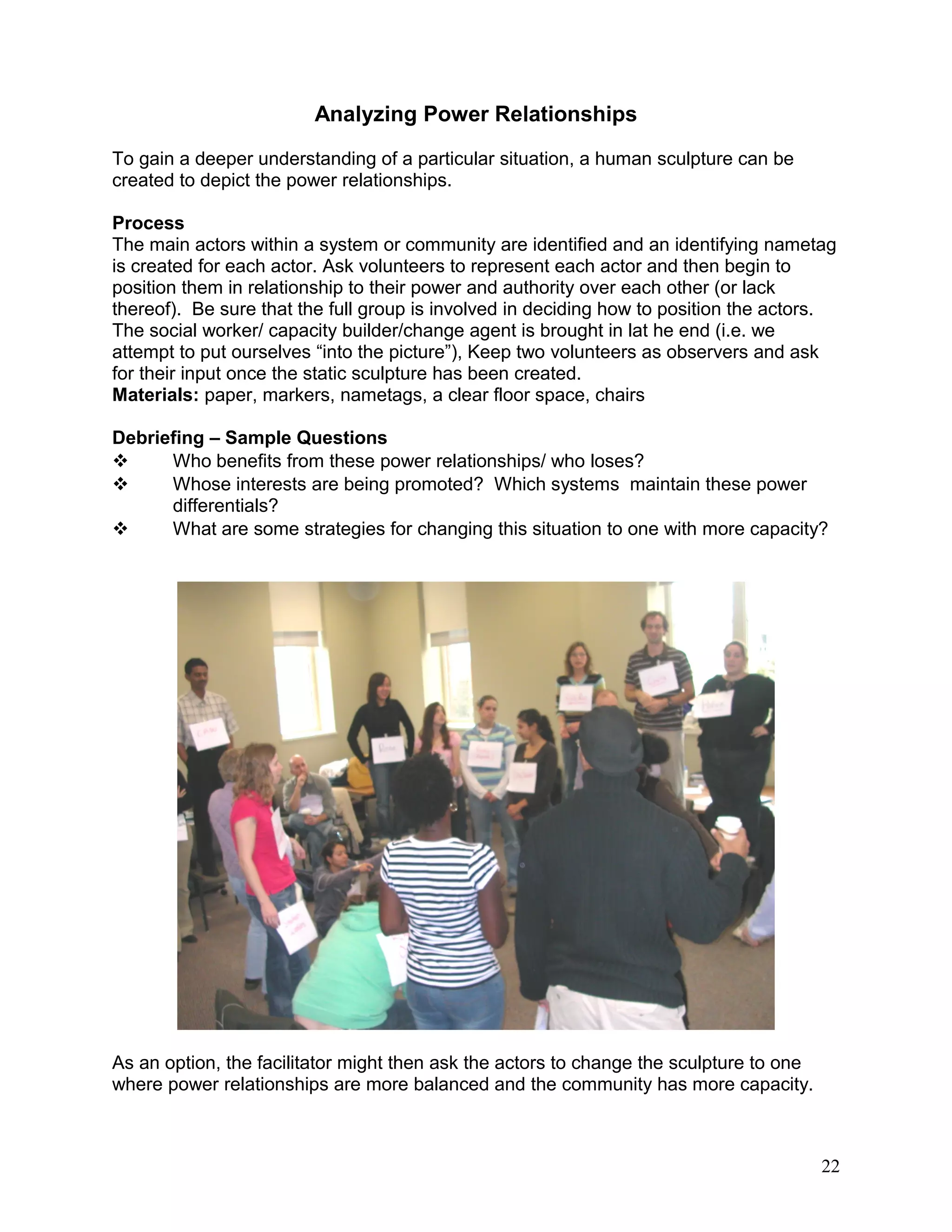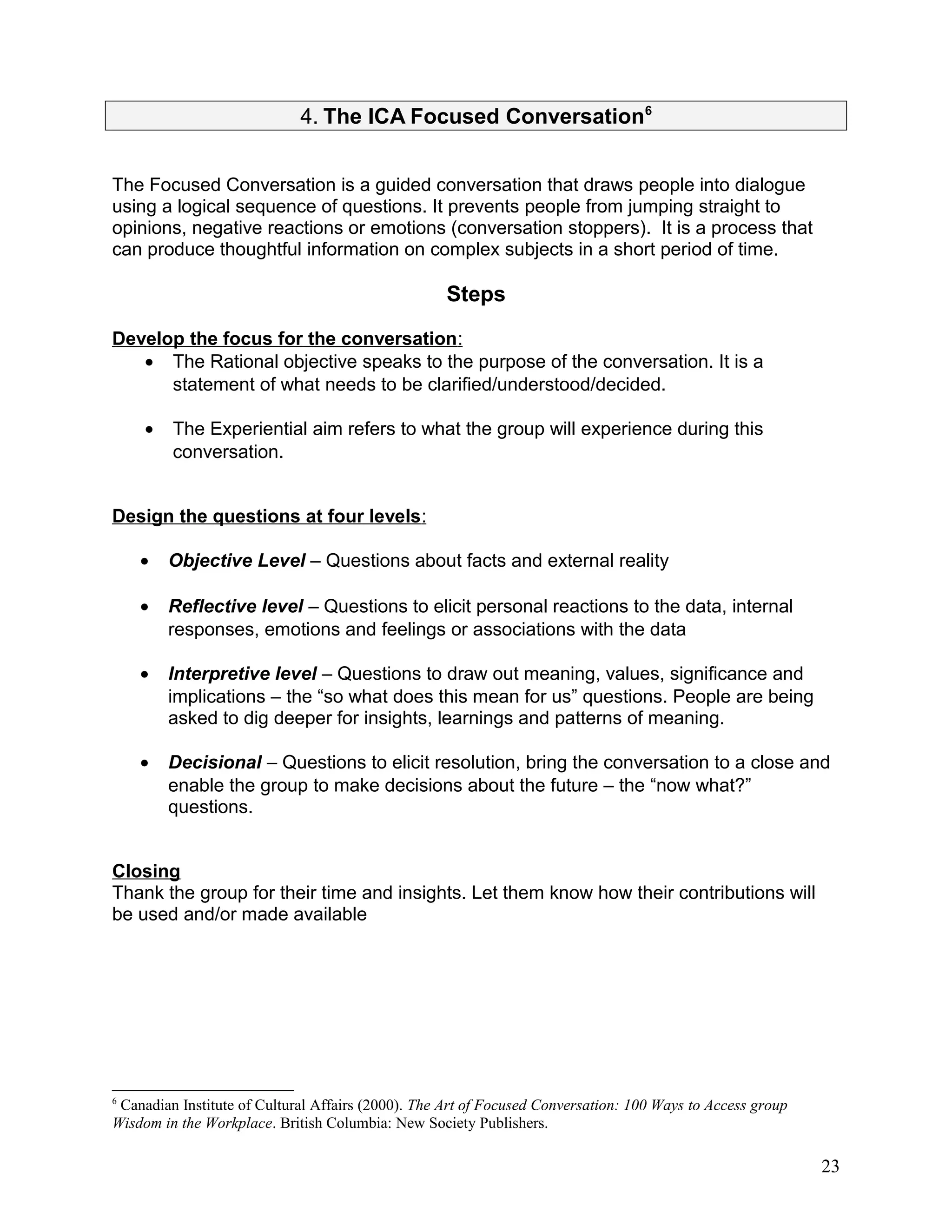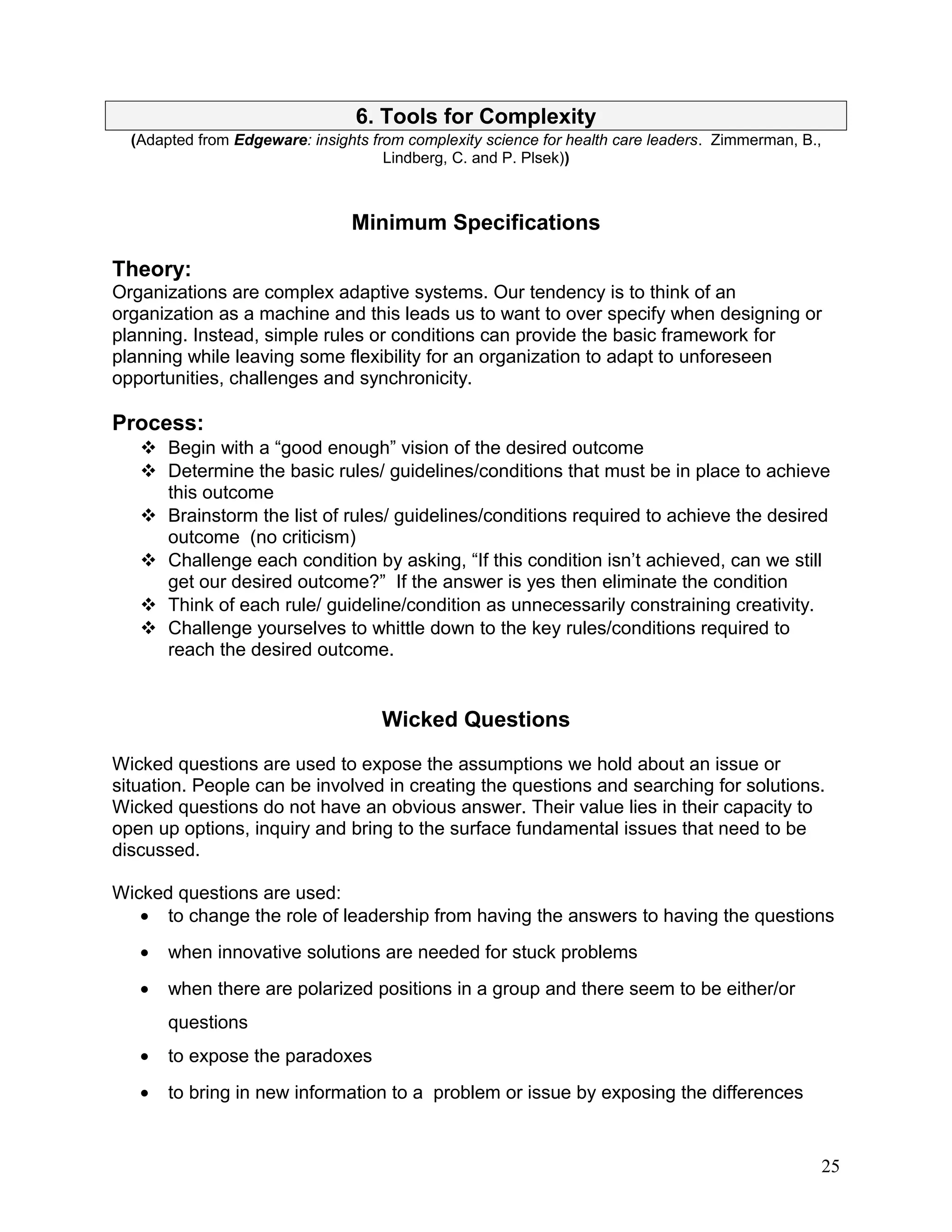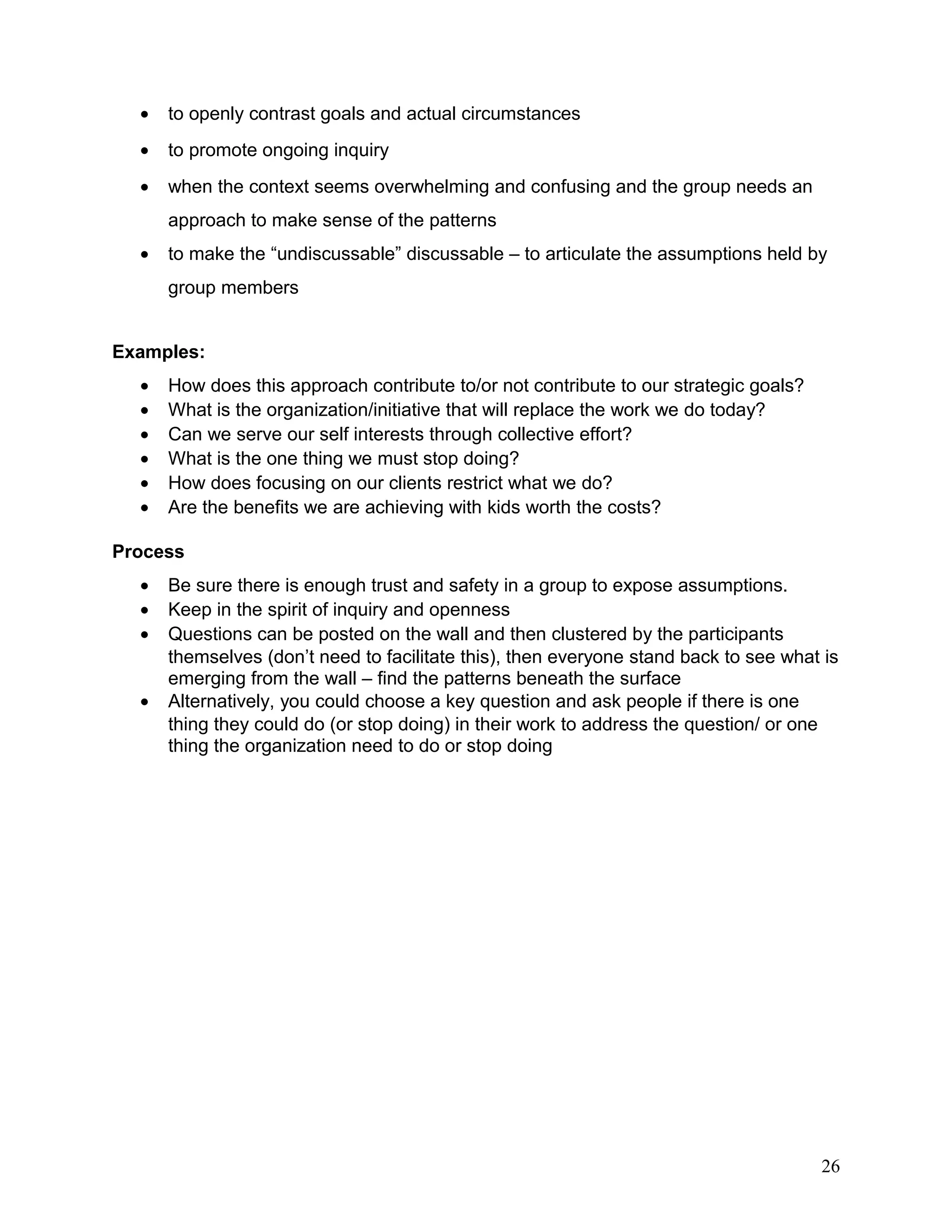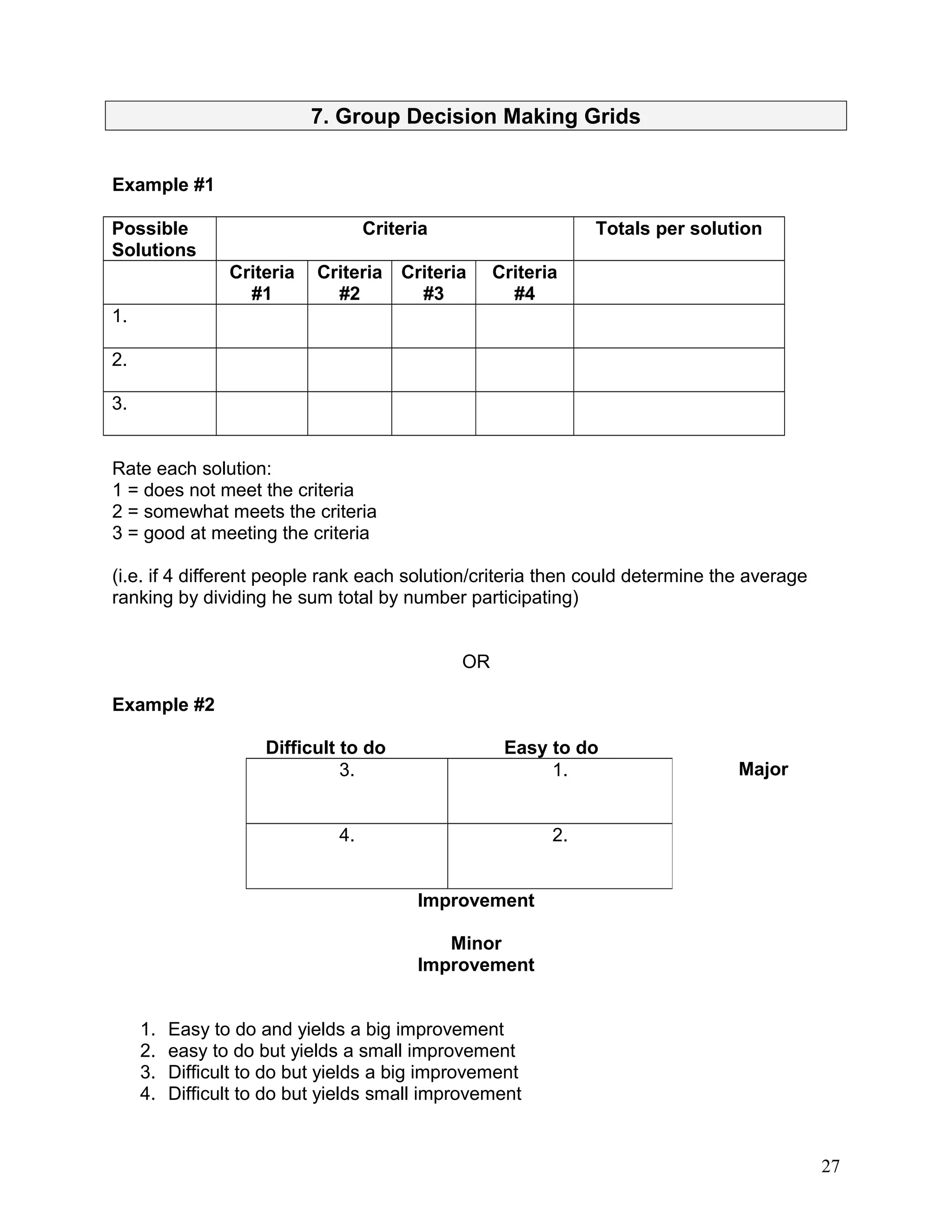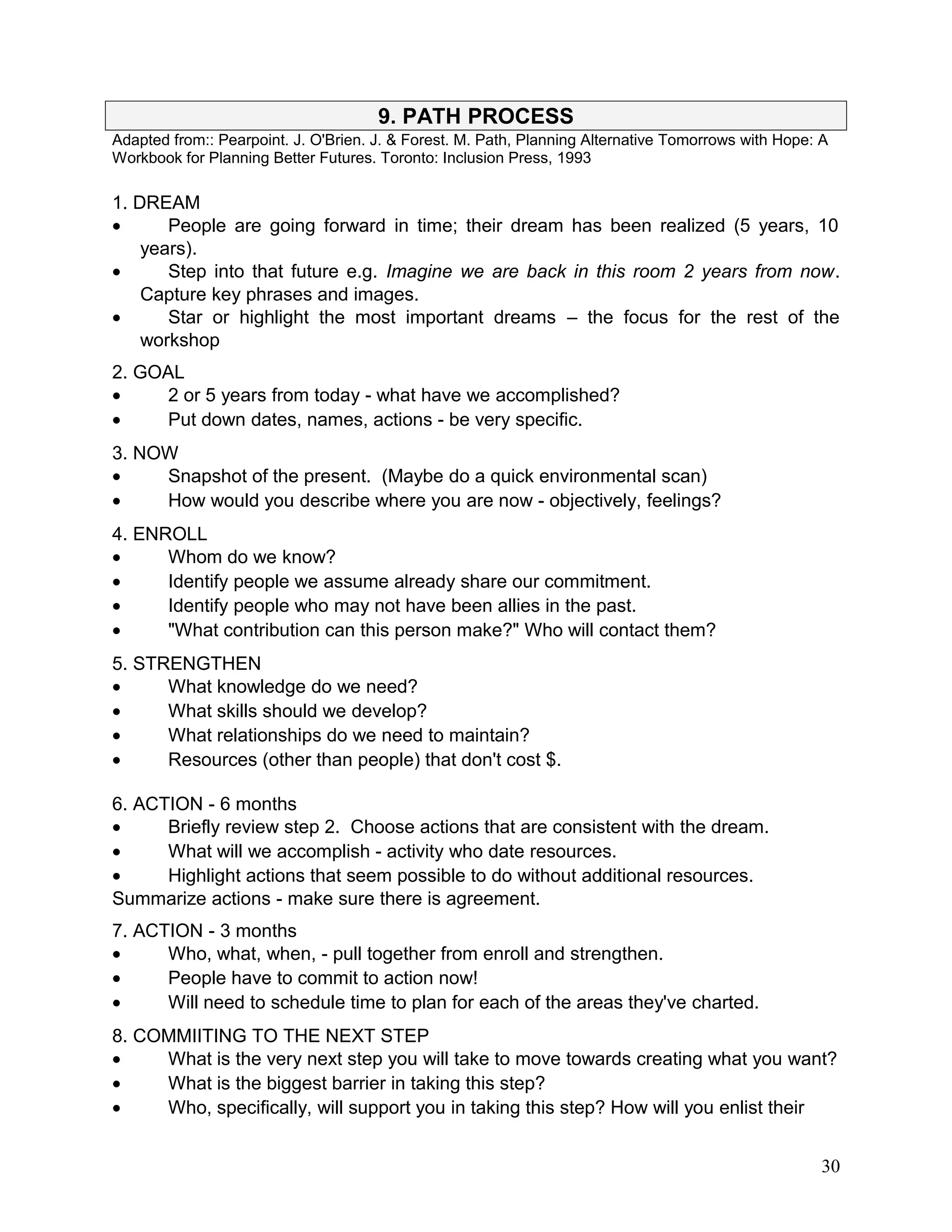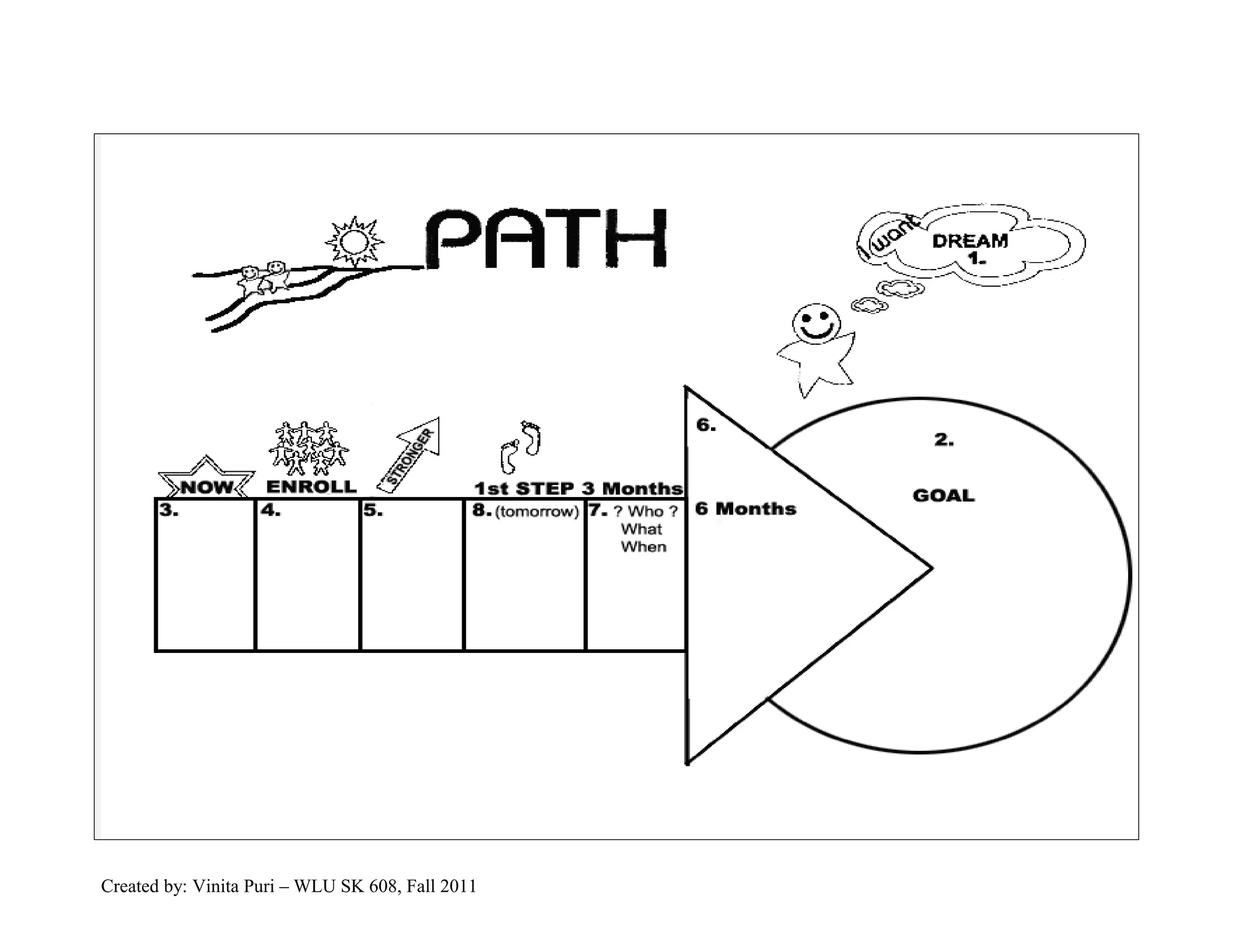The document provides guidance for facilitators on tools and techniques to effectively lead group processes. It discusses the role of the facilitator as a neutral party who helps groups achieve goals through structured and participatory processes. Some key tools covered include icebreakers to build rapport, consensus-based decision making, active listening, and nonverbal cues like hand signals to manage discussions. The overall emphasis is on inclusive processes that respect all perspectives and serve the needs of the group.


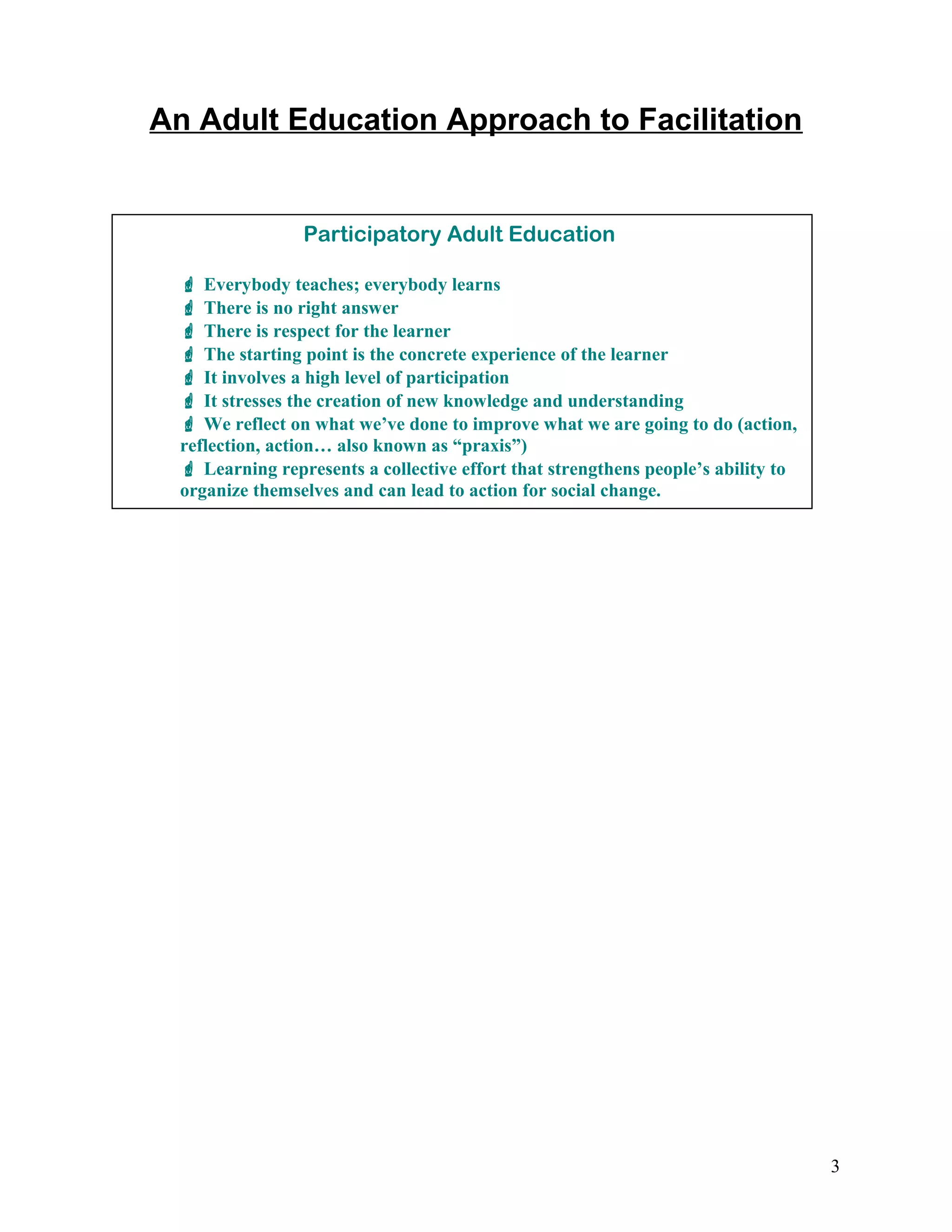

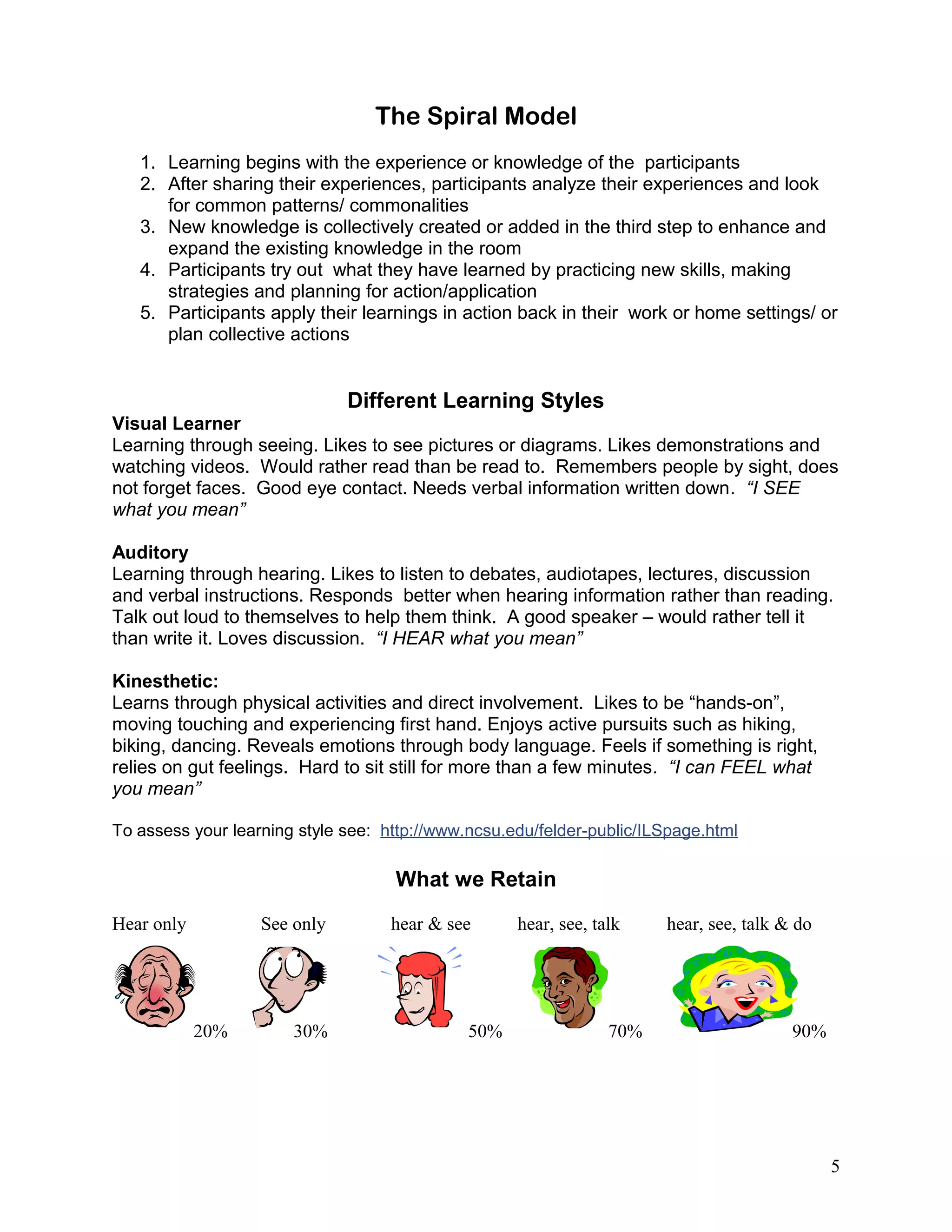
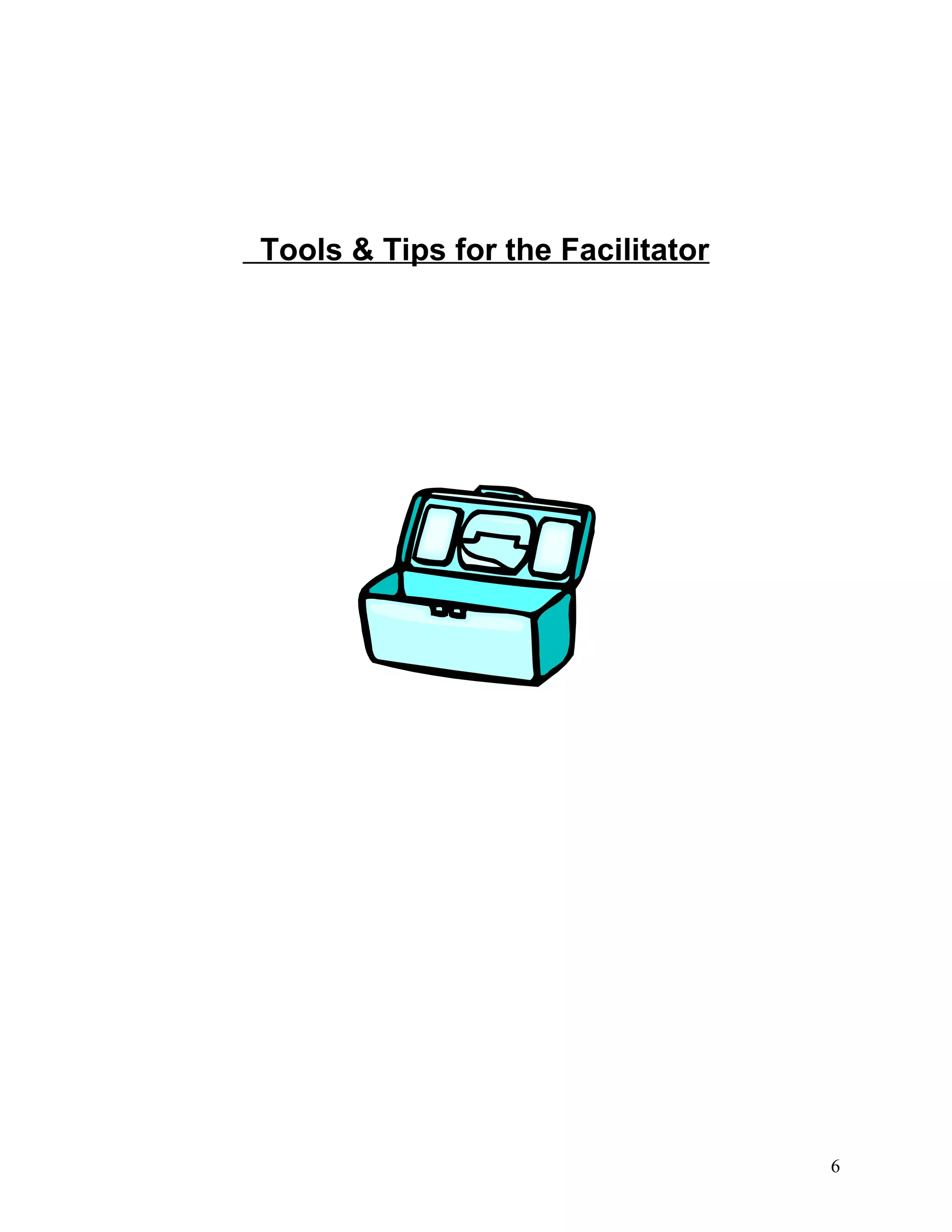
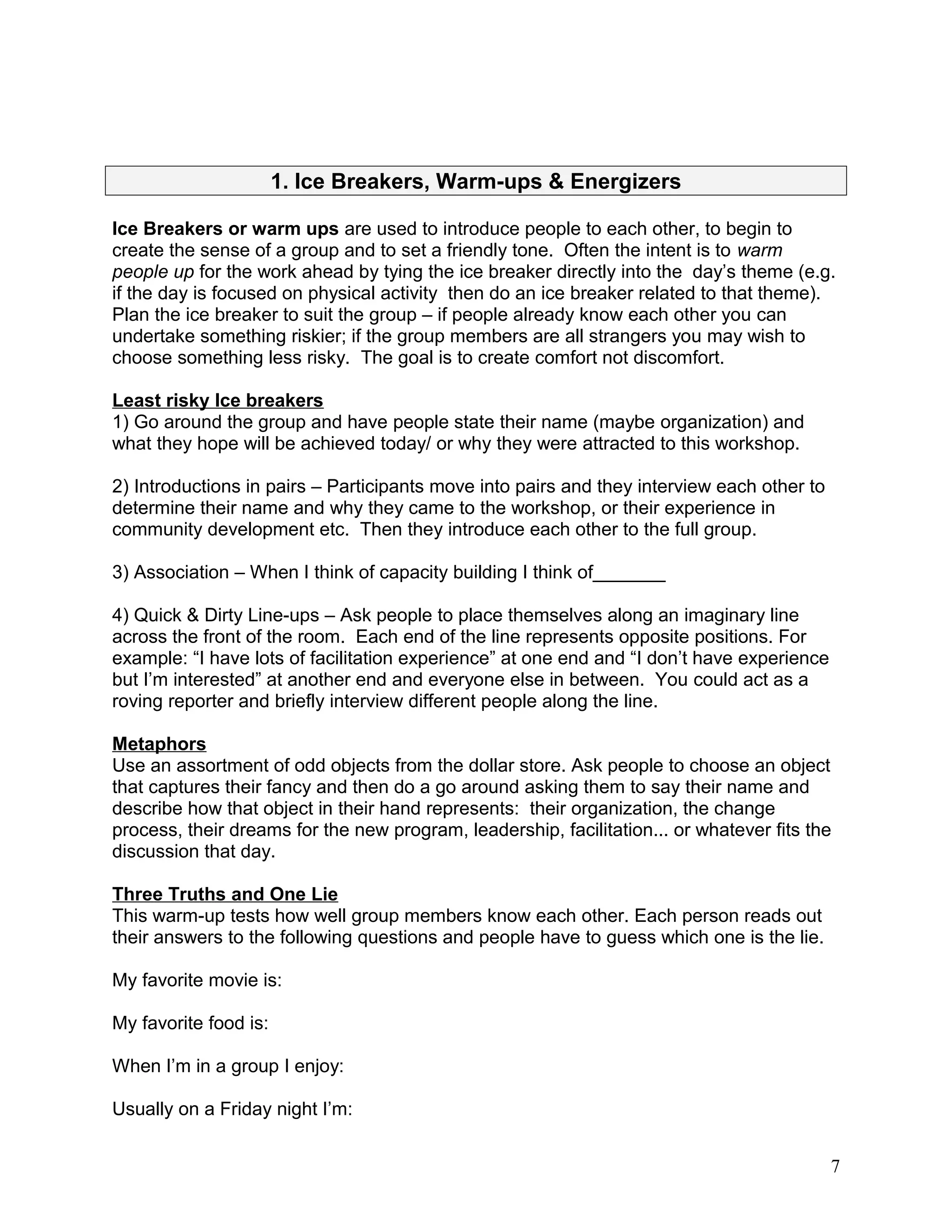
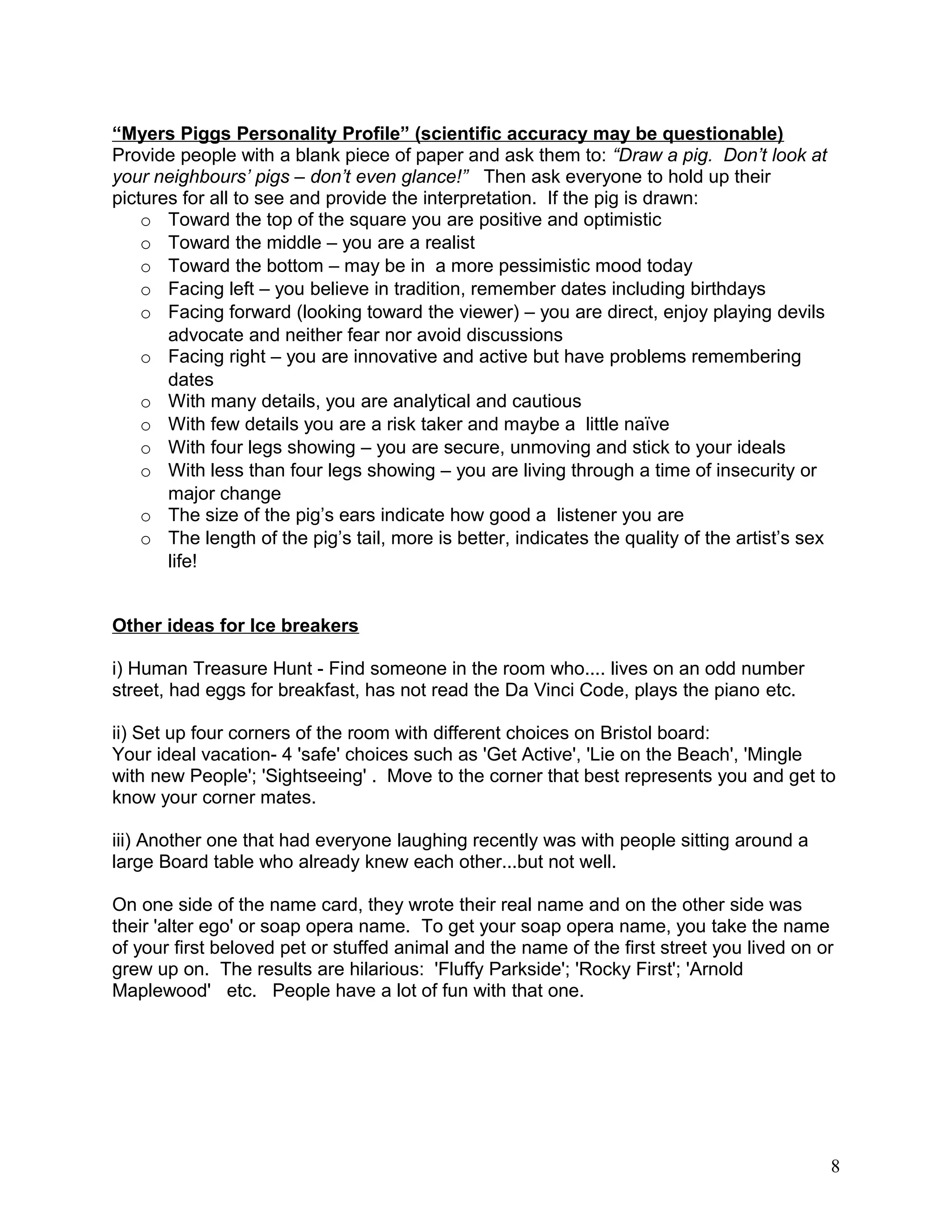
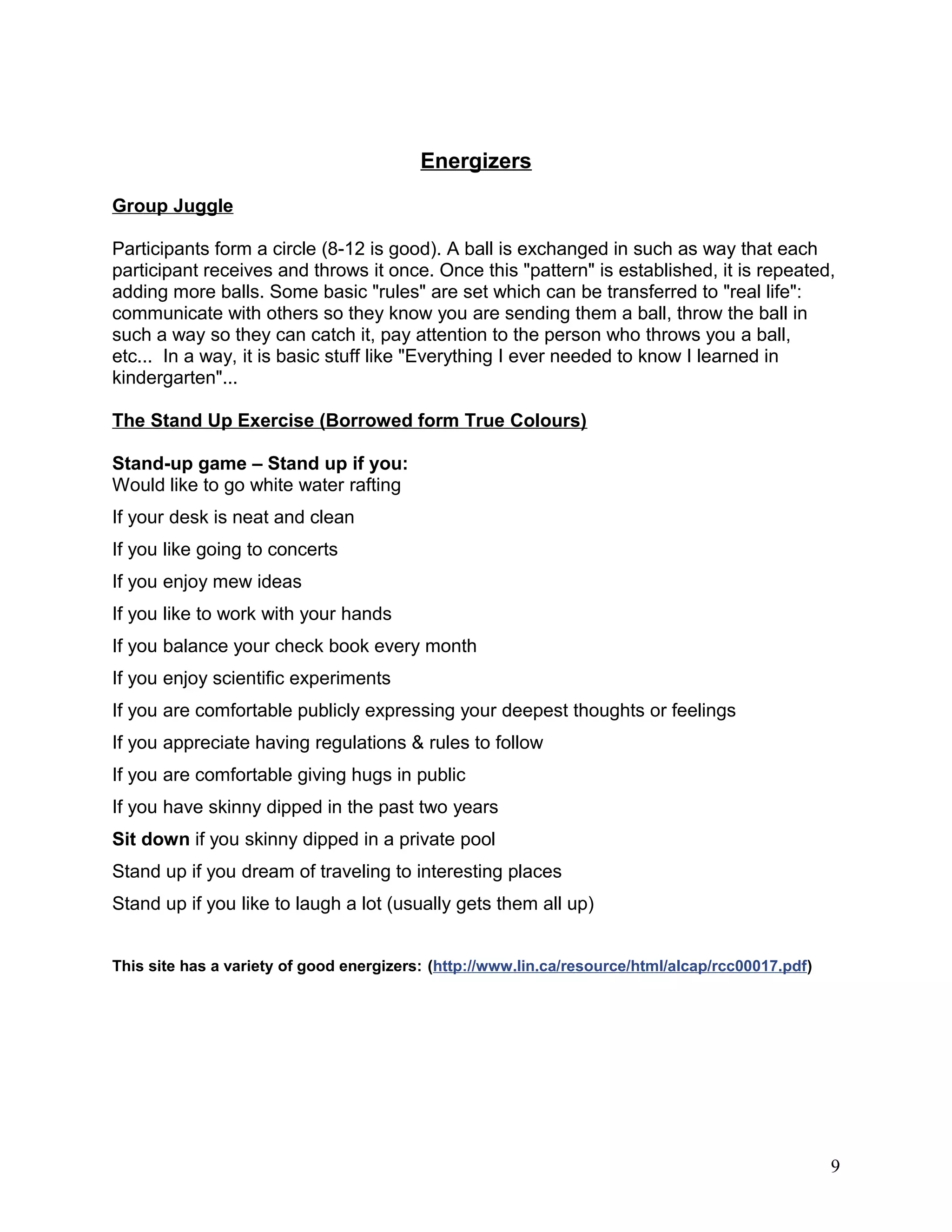
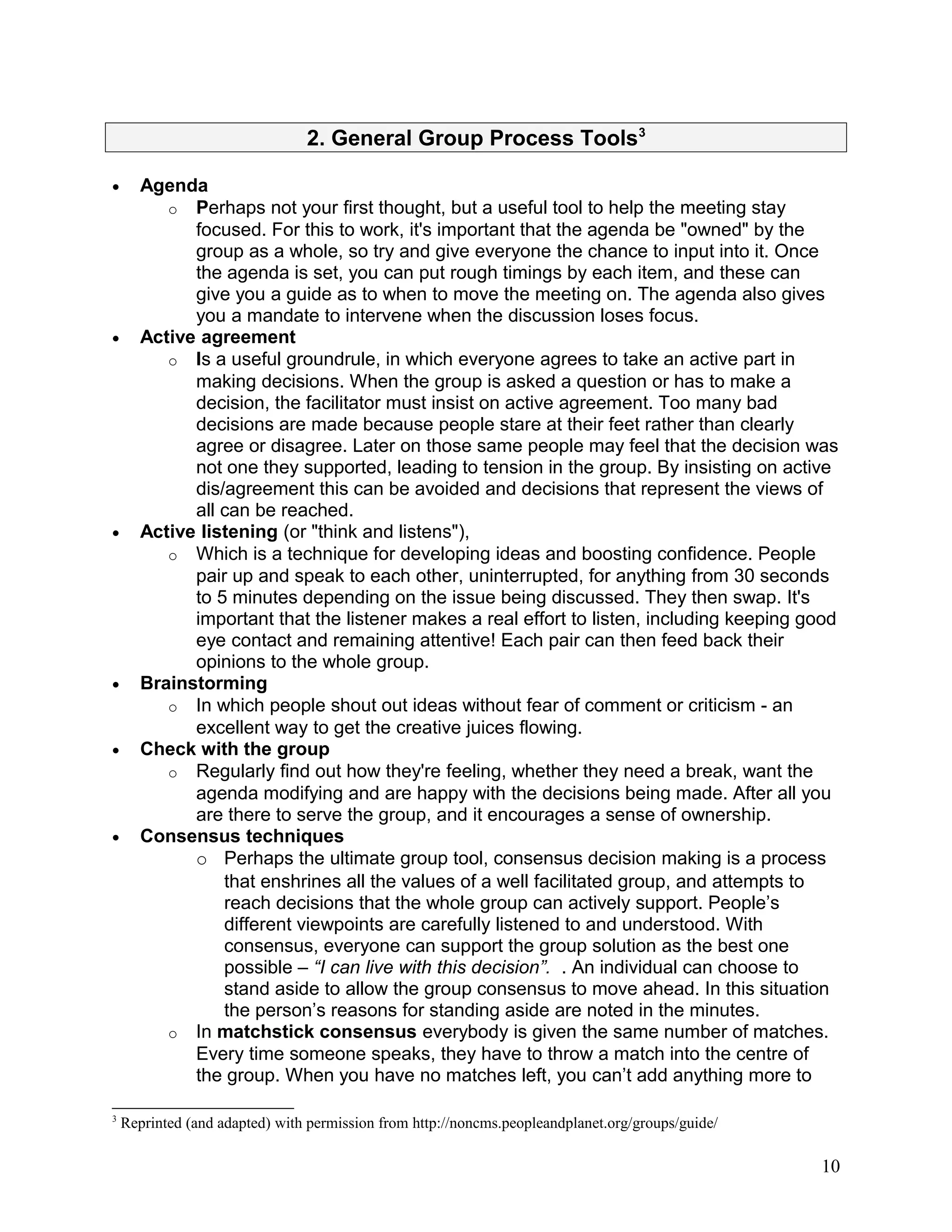
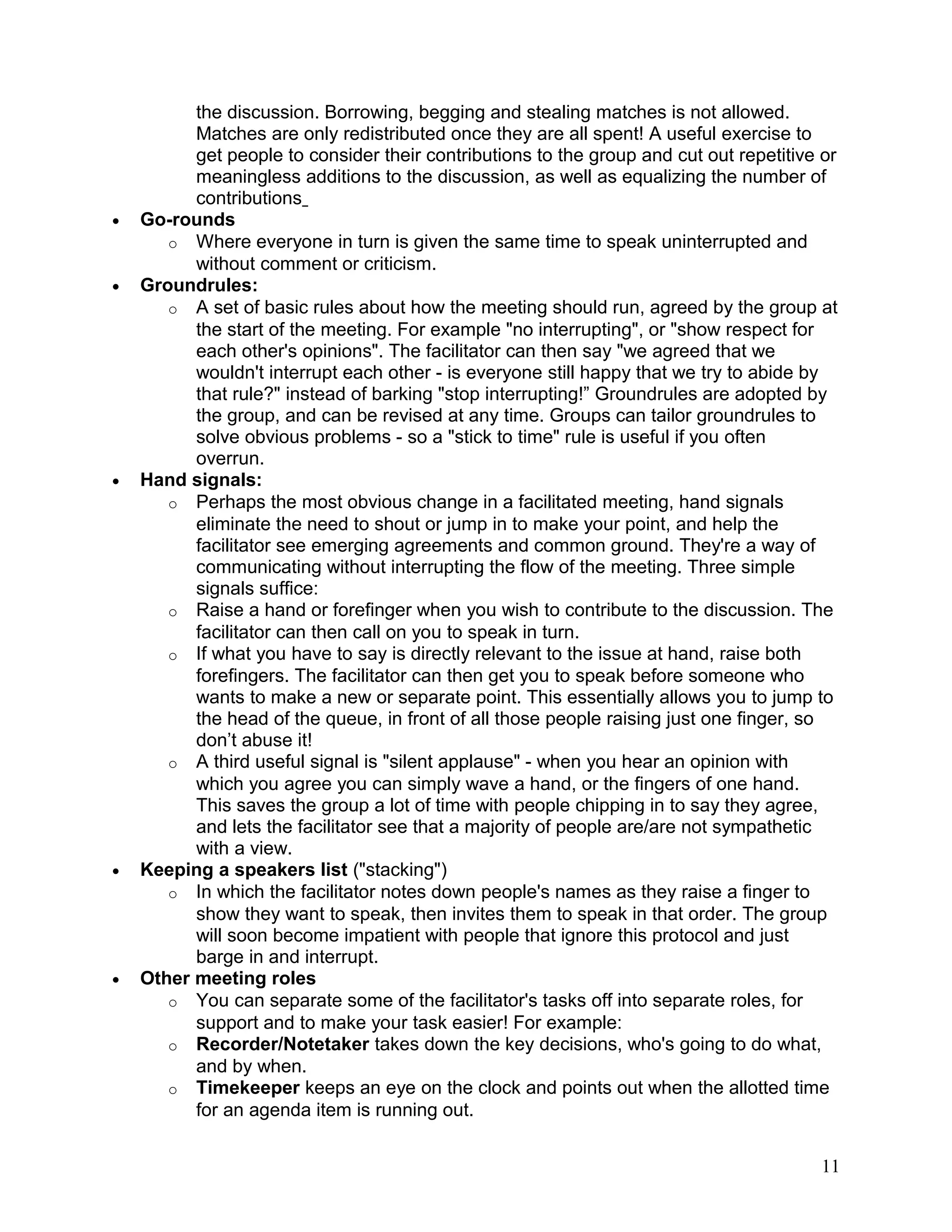
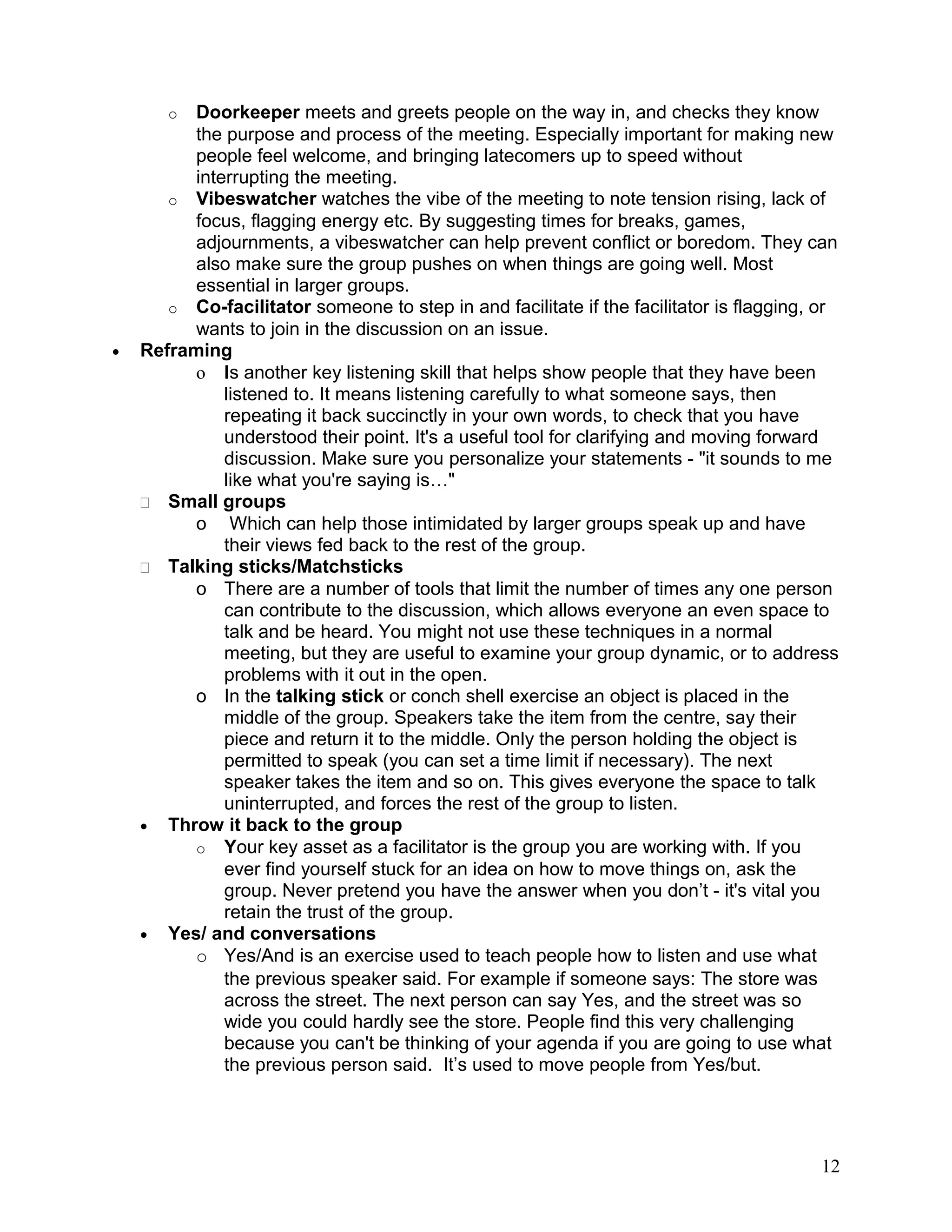
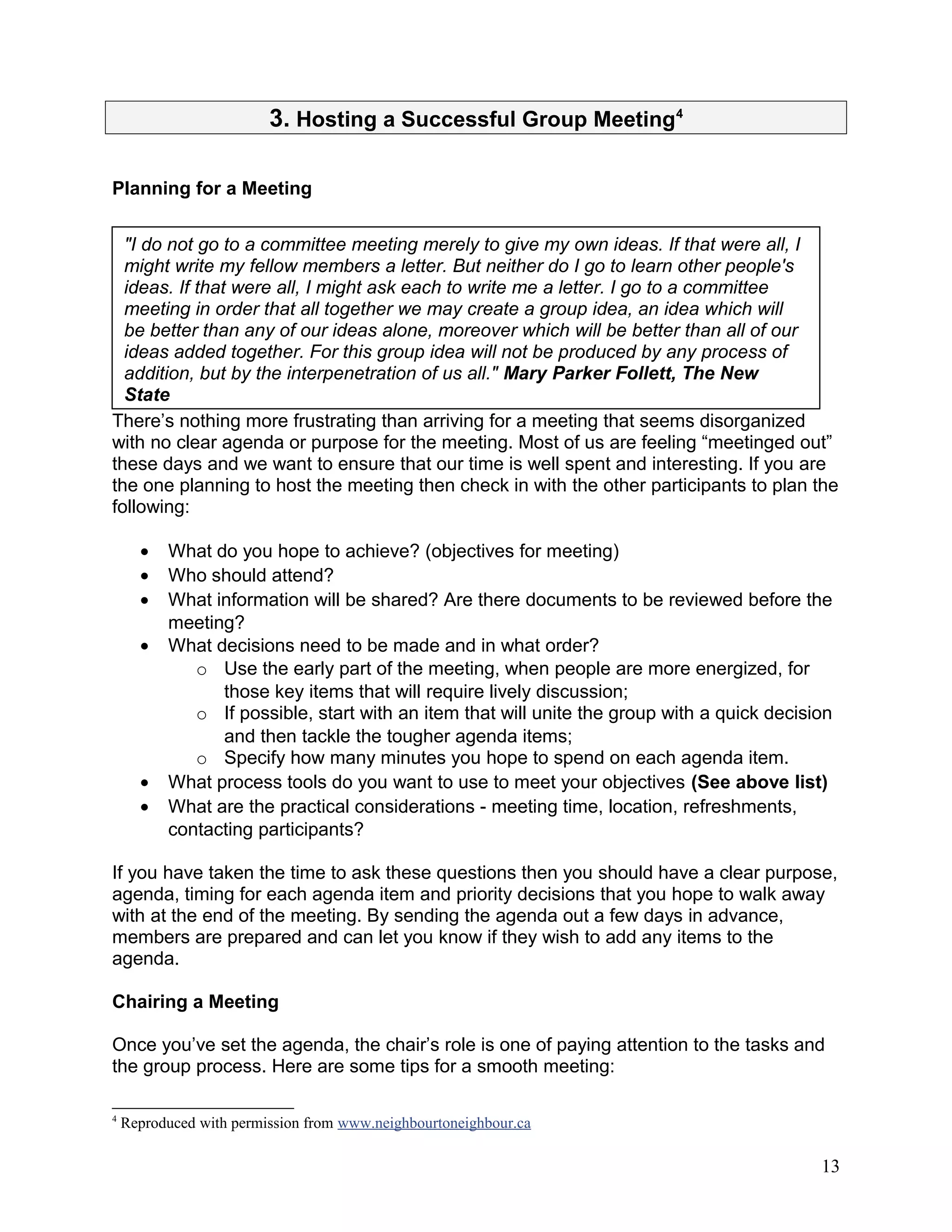
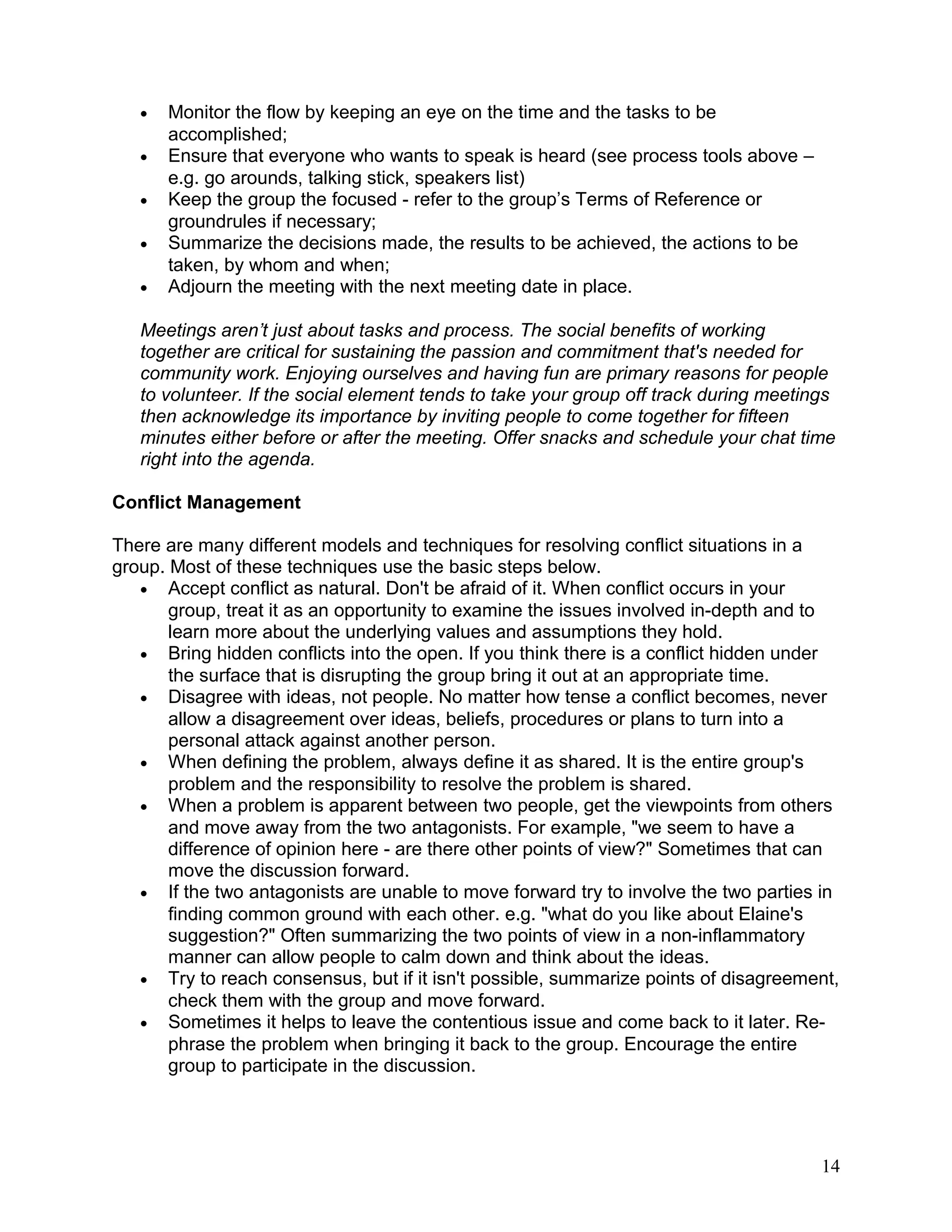

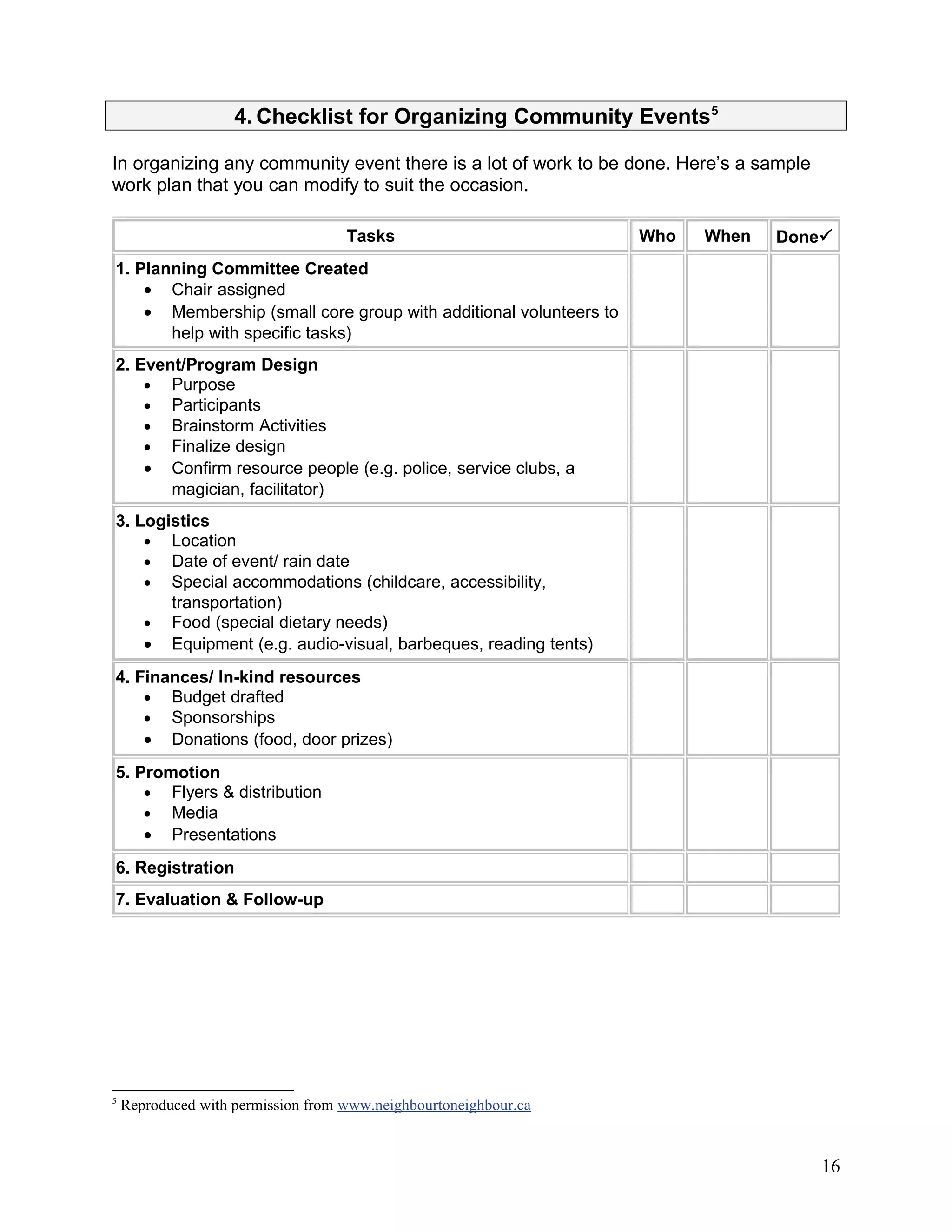
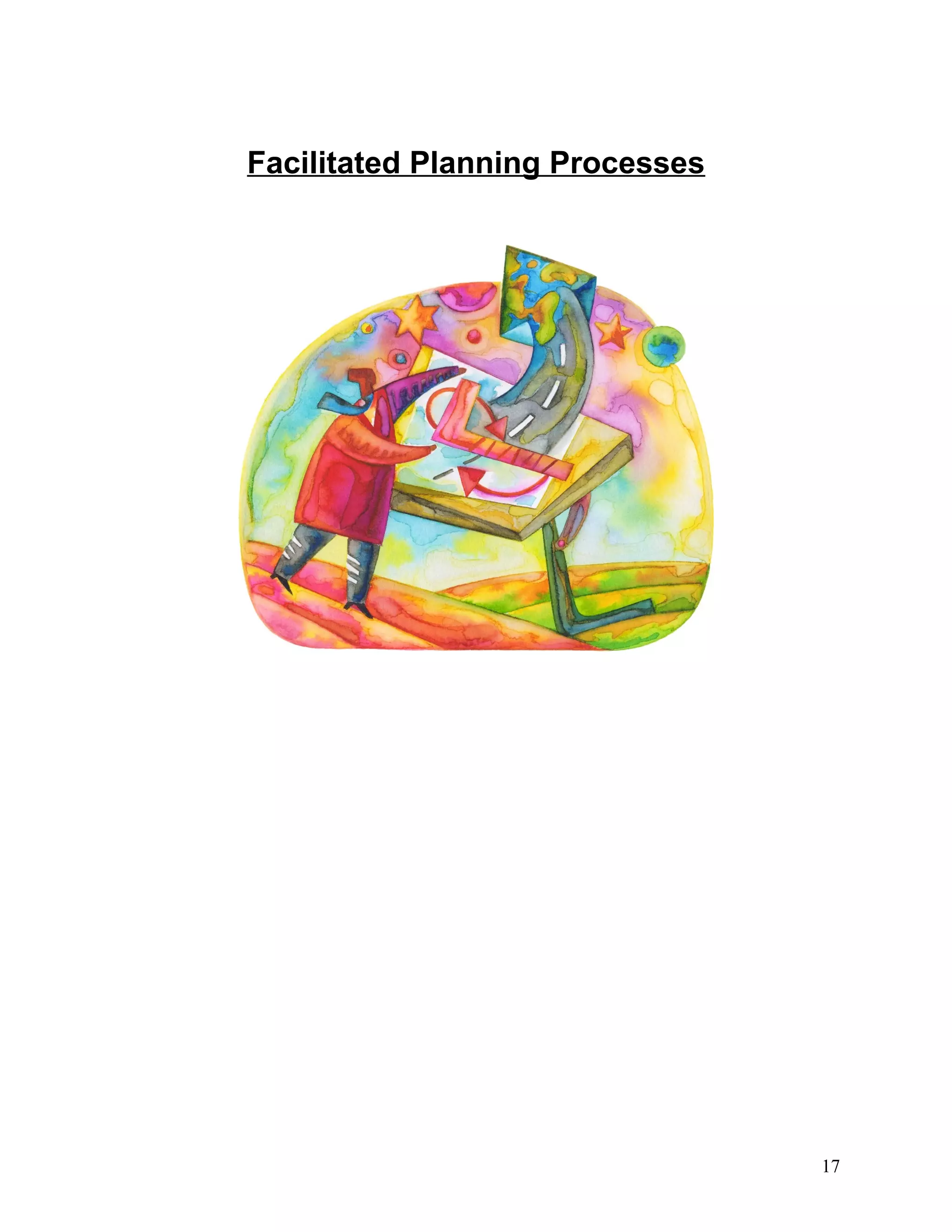
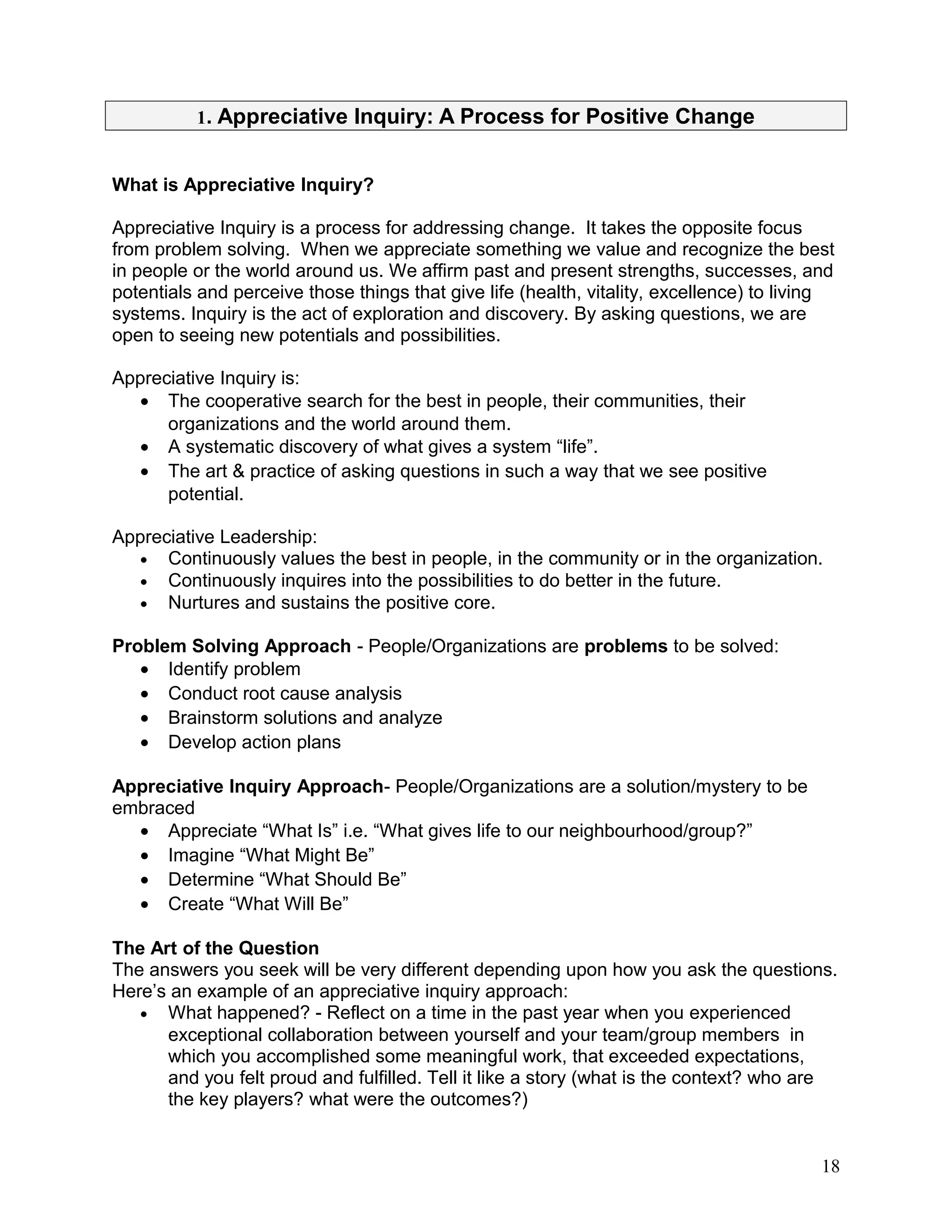
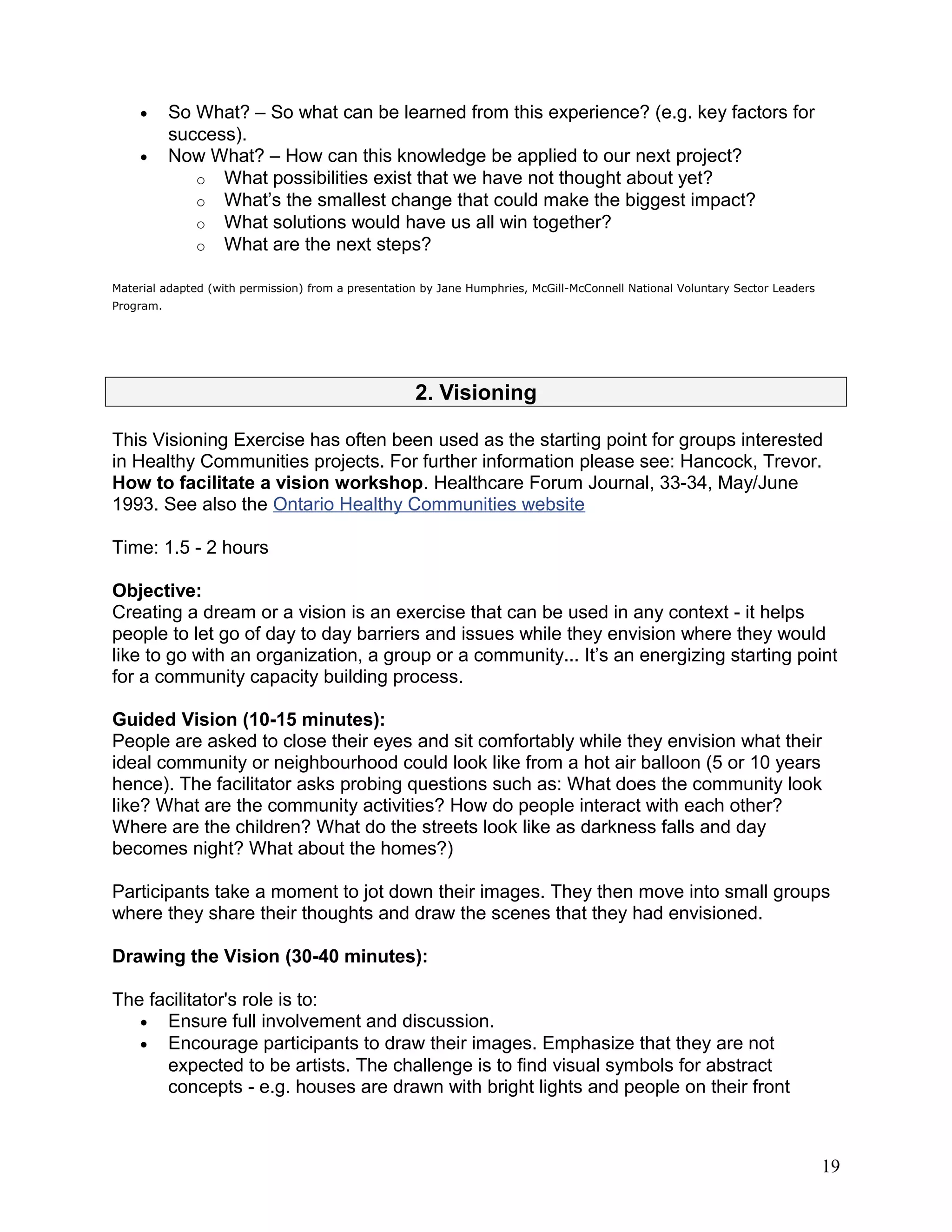
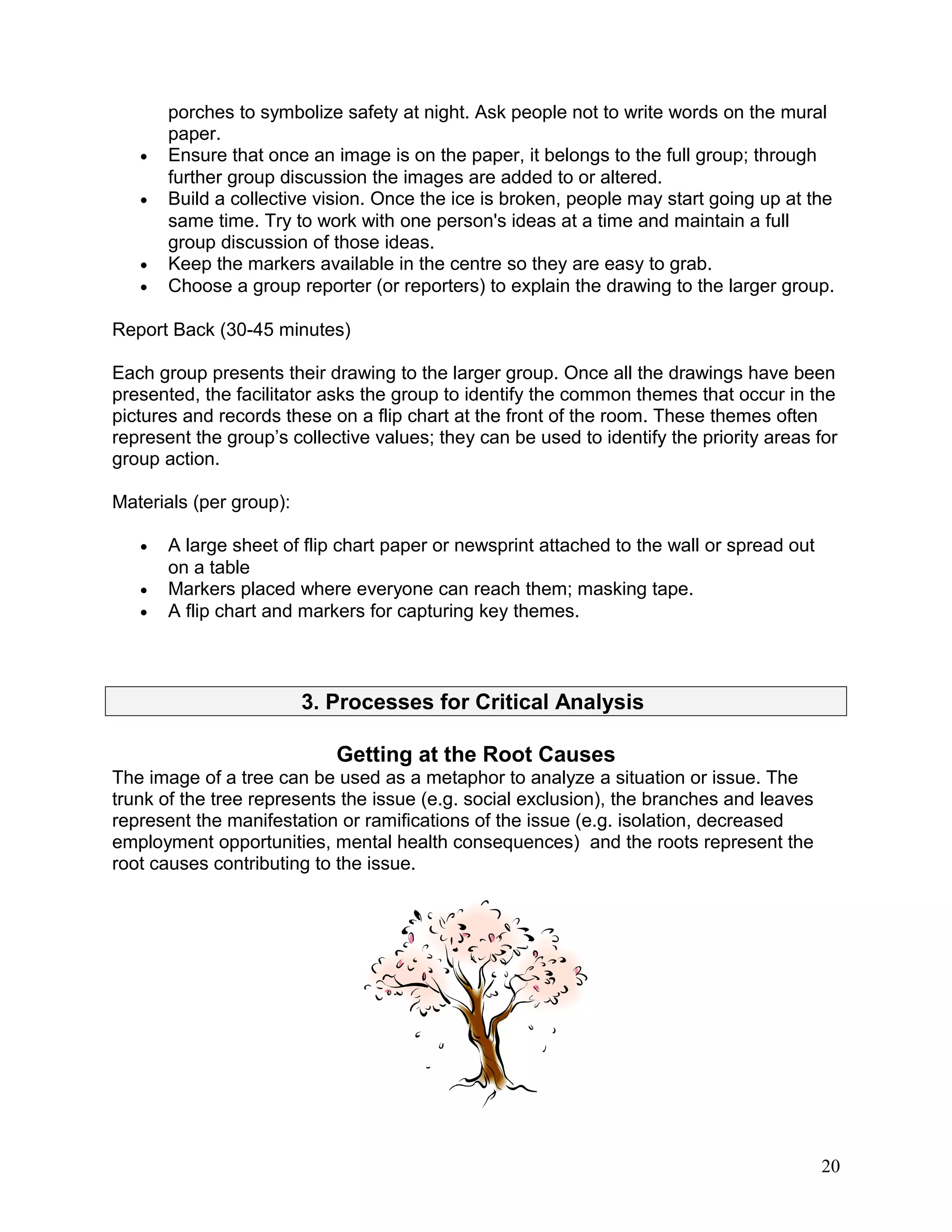
![Example - Causes of teen pregnancy
Ask participants to identify the root causes for an unplanned teen pregnancy (beyond
sexual activity). The list will include things like lack of access to birth control, lack of
information about sexual health, lack of communication/negotiation skills, poverty, lack
of hope etc. Then identify the possible consequences or ramifications of teen
pregnancy for a young woman (lack of support, curtailing of education etc.) Brainstorm
strategies to address the root causes and diminish the unwanted consequences of teen
pregnancies. Strategies may include recreation/employment activities, improving sexual
health education in schools, condom machines in washrooms etc. Point out how
important it is to know the local primary causes of teen pregnancy, before choosing
strategies, i.e., don’t try to fix the car until you know what is wrong with it.
The 5 “Why’s”
Keep asking “why” to dig down deeper and deeper, past the outward symptoms to
unearth the real cause of the health/social issue. It’s like peeling back the layers of an
onion.
Why is Jason in the hospital?
• Because he has a bad infection in his leg.
But why does he have an infection?
Because he has a cut on his leg and it got infected.
But why does he have a cut on his leg?
Because he was playing in the junk yard next to his apartment building and there
was some sharp, jagged steel there that he fell on.
But why was he playing in a junk yard?
Because his neighborhood is kind of run down. A lot of kids play there and there
is no one to supervise them.
But why does he live in that neighborhood?
Because his parents can't afford a nicer place to live.
But why can't his parents afford a nicer place to live?
Because his Dad is unemployed and his Mom is sick.
But why is his Dad unemployed?
Because he doesn't have much education and he can't find a job.
But why ...?“
[Public Health Agency of Canada
www.phac-aspc.gc.ca/ph-sp/phdd/determinants/determinants.html]
21](https://image.slidesharecdn.com/4113508f-eeab-4b78-bd9a-016872eae7a3-160815195506/75/Presentation-21-2048.jpg)
